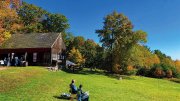For three days each fall, hundreds of cider-hounds, families, and pomological devotees gather in Western Massachusetts to celebrate the apple and the joys of hard cider. Featuring about 18 small-batch cider producers and orchards, primarily located in the hill towns north of Northampton, CiderDays offers workshops, tastings, talks, and other fruitful activities from October 31 through November 2.
Through the eighteenth and into the early nineteenth century, hard cider was the go-to beverage in New England. Inexpensive and easy to produce, it was enjoyed by everyone, from farmers to ministers to Harvard students—and even children, who drank the less alcoholic second pressings, says New Hampshire-based writer and longtime cider expert Ben Watson, blogger Brother Apple and the author of Cider Hard and Sweet: History, Traditions, and Making Your Own (2013).
Early colonists couldn’t grow barley or grapes, he says, yet they didn’t trust the water. So they began experimenting with fermenting available produce, like pumpkin, corn, and American persimmon, and “they soon found nothing as suitable as apples.” Cider was also considered healthy, especially compared to whiskey and rum.
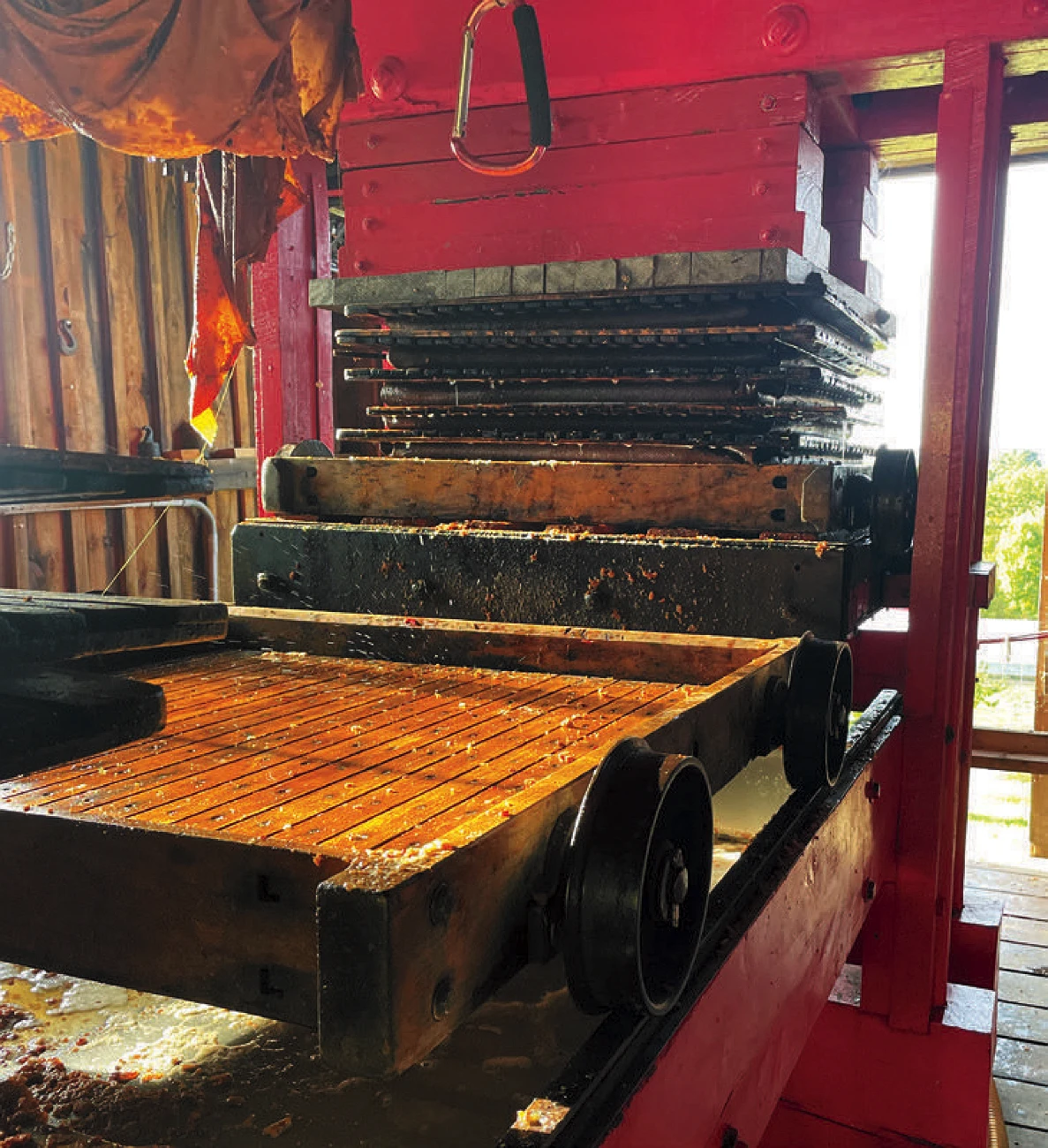
By the 1820s, however, growing concerns over drunkenness led to the American temperance movement in Boston, and ultimately to the Prohibition. That, combined with the rise of an urban-centered society and new immigrant groups from Ireland and Italy, who preferred beer and wine, Watson says, led to the virtual disappearance of public cider production in New England by the 1930s.
CiderDays began three decades ago as a small, grassroots gathering. It soon came to revolve around West County Cider, in Colrain, where owners Judith and Terry Maloney had moved from California in 1972. They began making high-quality cider to share with friends and family and became artisanal retail cider-makers in 1984.
“CiderDays and Massachusetts’s Franklin County were ground zero for the hard cider revival in the United States,” says Matt Kaminsky, a farmer and apple enthusiast who sometimes goes by the nickname Gnarly Pippins. Before the Maloneys and a handful of others in New England—including Scott Farm Orchard in Dummerston, Vermont, and Farnum Hill Ciders (founded and owned by influential innovators Stephen Wood ’76 and his wife, Louisa Spencer ’76) in Lebanon, New Hampshire—there was virtually no hard cider on the public mainstream market.
CiderDays celebrates the resurgence of the beverage but also digs deep into the cider-making process and the fruit, says Claire Morenon, the communications manager for CISA (Community Involved in Sustaining Agriculture), an organization that supports the local-food economy in the Pioneer Valley. “A lot of events are geared toward the nitty-gritty of apple production and homebrewers. There’s a deep dive into cider and apple nerdery.”
There are also plenty of activities for the casual consumer and cider newbies. Farmers and cideries run tours, explaining how apples are grown and cider is made. Some offer food and cider pairings in bucolic settings, along with locally made sweet ciders.
Among this year’s highlights is the Sixth Annual Wild and Seedling Pomological Exhibition. Kaminsky presides over this showcase that pits about 200 unique apples against each other, in categories such as “best of show” and “best crabapple.” It’s held at the Williamsburg Grange Hall, where idiosyncratic apples from around the country are laid out on paper plates. “There’s a call for submissions in August and people mail in the fruit to me,” Kaminsky says, “and the criteria is that it must be an apple grown from a seedling, rather than a tree planted or grafted, or found in the wild.”
People mill about tasting the apples—“There’s a lot of discussion and a lot of toothpicks,” he says—and in front of each plate are a pen and a placard “and space on which you and 499 other people write adjectives describing the apple, using a lot of superlatives.”
The rest of the festival revolves around the independent farms that form the heart of Massachusetts’s cider industry. West County Cider, now led by the Maloneys’ son Field, continues its small-batch tradition, producing about 3,000 gallons of cider a year, a minuscule amount compared to mainstream commercial sellers. The company’s Baldwin cider uses an old Massachusetts apple named for its developer, Revolutionary War colonel and civil engineer Loammi Baldwin (who received his master’s degree from Harvard in 1785).
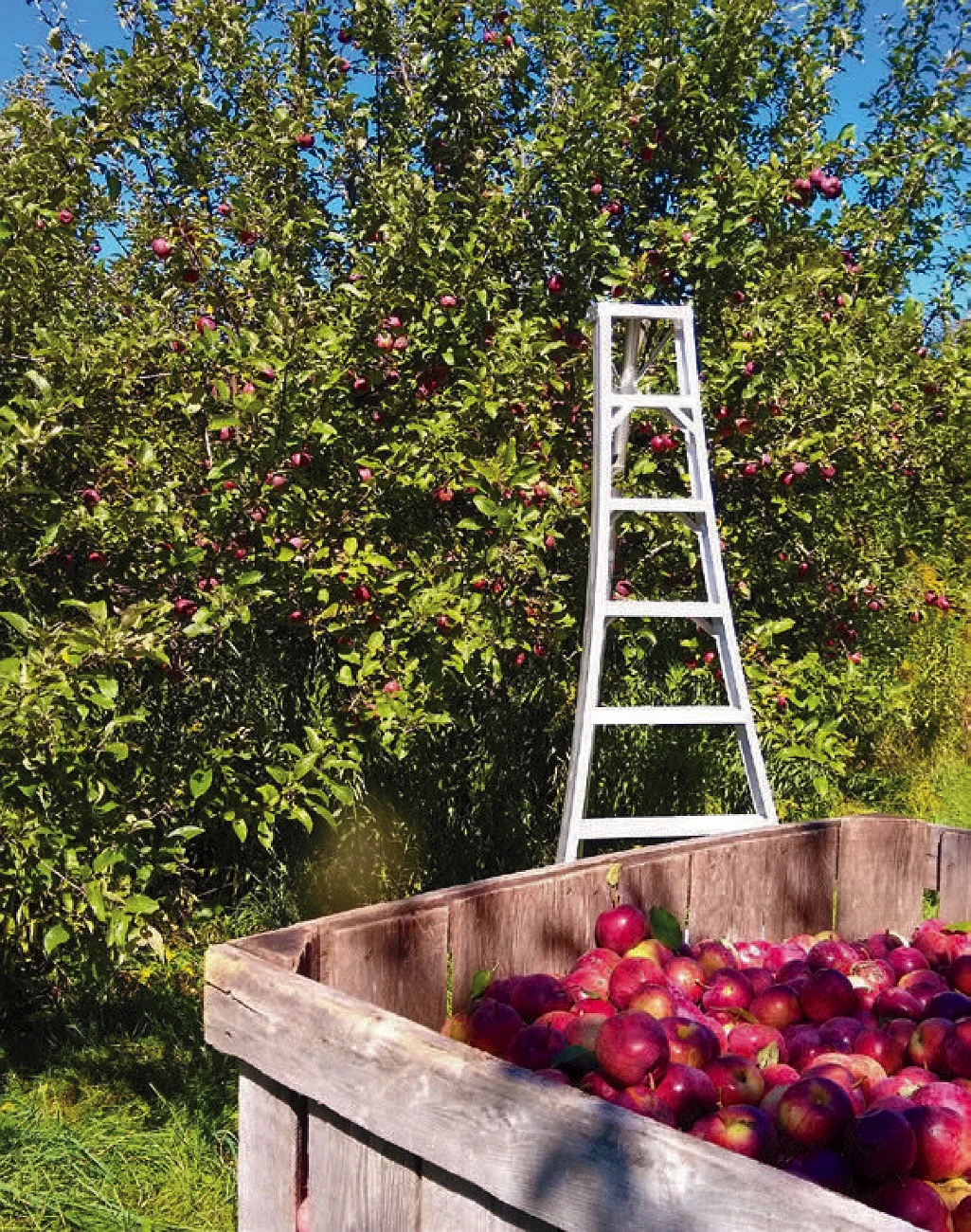
“The Baldwin was a mainstay in New England, but it’s rare now because the tree only yields every other year, so it’s not commercially viable,” Maloney notes. West County Cider partners with other small orchards to make its Apple and Vine cider and its unusual Quince Cider (the tannin-rich fruit is mixed with apples).
Scott Farm Orchard will likely host the ticketed Cider Salon—the largest cider-tasting opportunity, under a tent, with food. Among the others offering a range of ciders, including sweet cider, and apple-related activities are: Clarkdale Fruit Farms (Deerfield), New Salem Cider (New Salem), Headwater Cider Company (Hawley), and Carr’s Ciderhouse (Hadley). (Check out the forthcoming map and schedule on ciderdays.org.)
Carr’s Ciderhouse, owned by Nicole Blum and Jonathan Carr, is set on their idyllic Hadley farm. They bought the dilapidated property in 2002 and have restored and revamped it, planting new orchards and opening land for other agricultural ventures, like their daughter’s vegetable farm and a sheep-and-chicken farm run by Kaminsky and his partner, Rachel Haas.
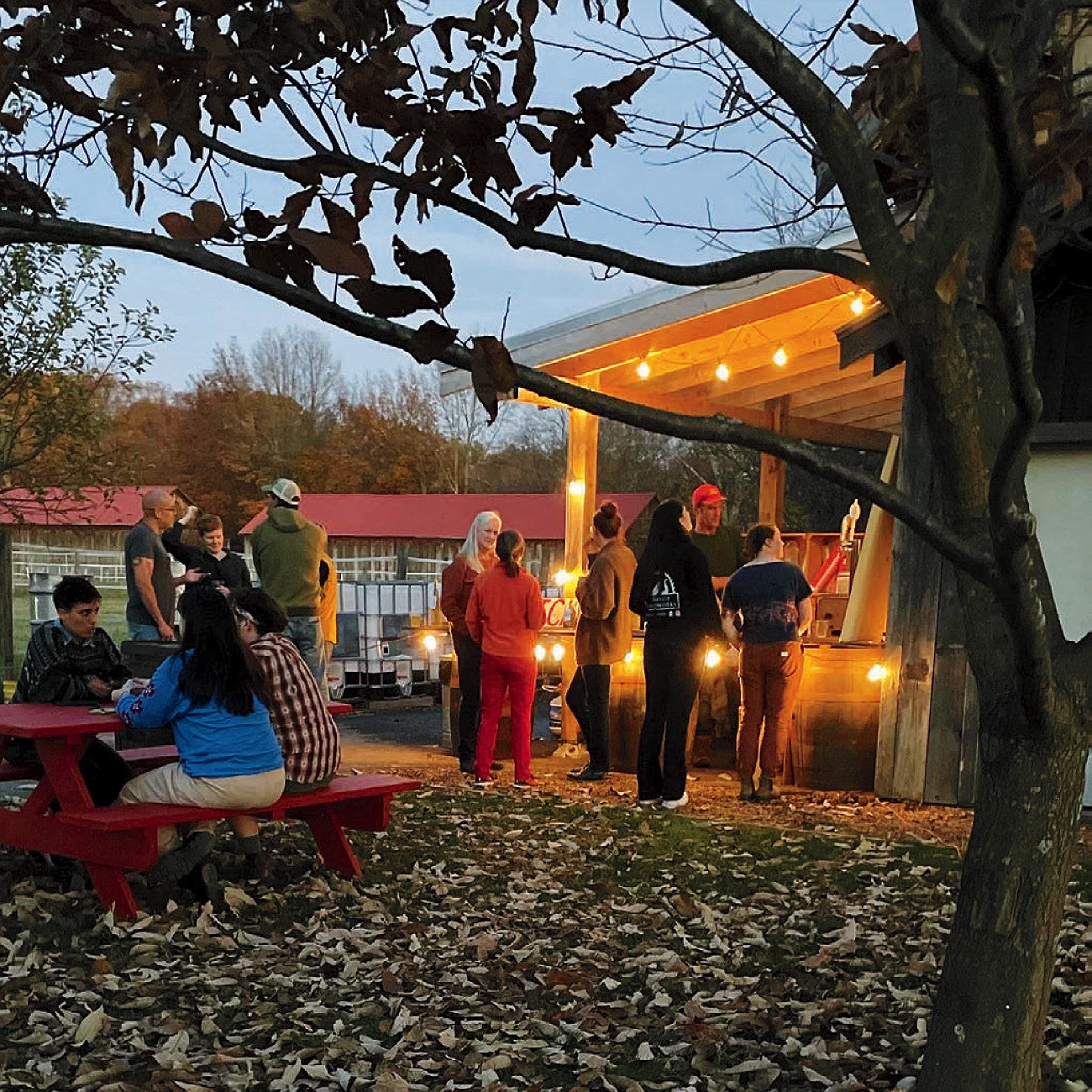
at Carr’s Ciderhouse | PHOTOGRAPH COURTESY OF CARR'S CIDERHOUSE
Blum and Carr now grow pears and a variety of apples: Wickson, Golden Russet, Goldrush, Hyslop Crabapple, and Baldwin. The fruit is pressed in the barn on an antique Mt. Gilead machine and “ferments all winter, using a low-temperature process that preserves the aromatics,” says Carr (whose father, Peter Carr, is a graduate of the Harvard Class of 1968). The production and chemistry of cider gives them “lots to play with” in terms of calibrating acidity, sugar, and structural elements like tannins, and they aim for a “clean expression” of the fruit.
Eight hard ciders, along with fruit sodas and shrubs, are served in their charming cider garden, set amid chestnut trees and abutting a goat yard. On Fridays and Sundays, Augustine’s Pizza Club, owned by Joe Kress, turns out unbelievably good delicate-crusted pies. The farm store also offers their homemade, high quality cider-based syrups, vinegars, shrubs, and switchel (a traditional punch made of apple cider vinegar, ginger, and honey), along with fresh produce from the vegetable farm.
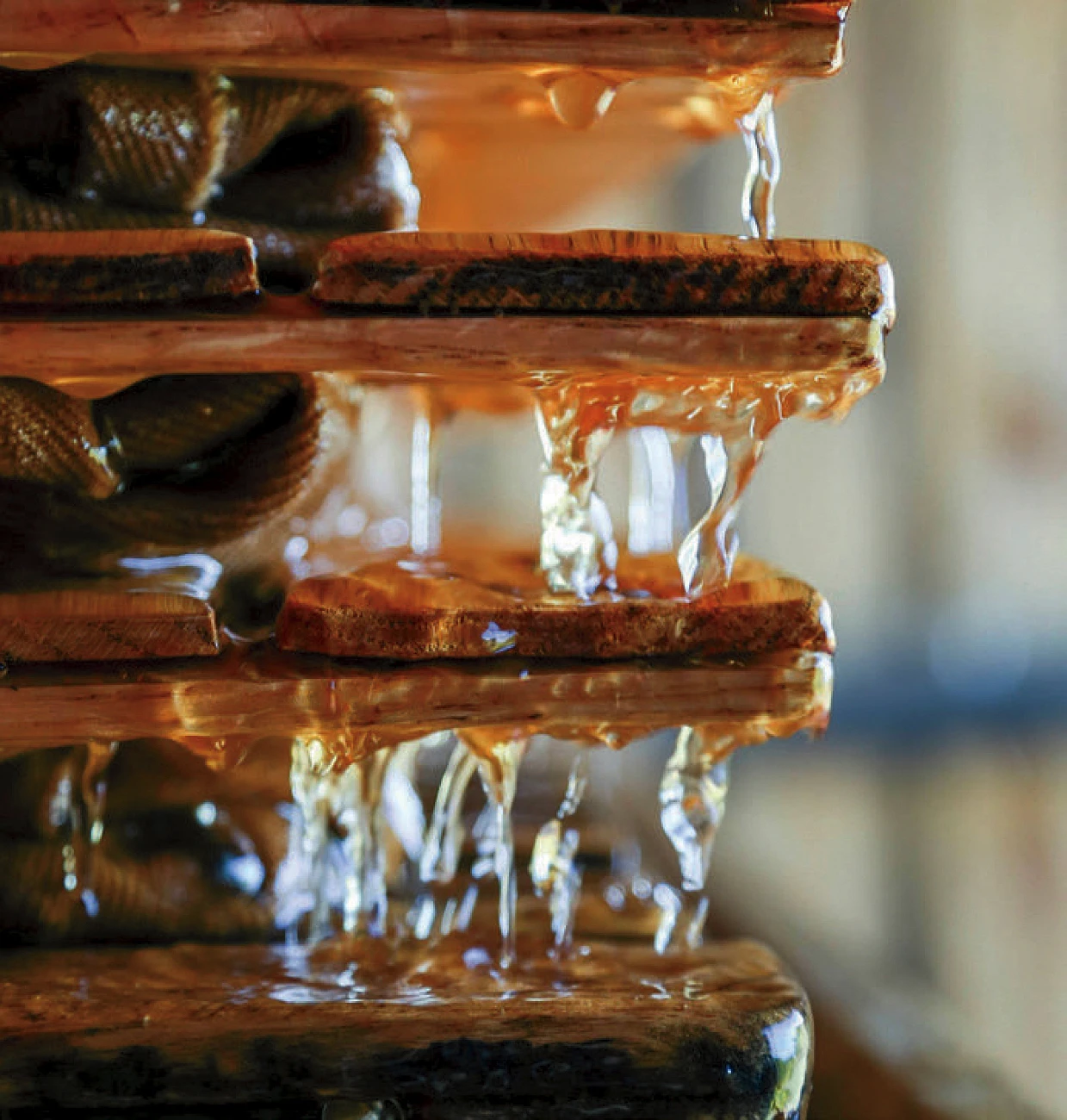
Unlike the mammoth CiderCon, run by the American Cider Society, says Kaminsky, CiderDays “is the real deal” for people who appreciate artisanal artistry and who want to experience the terroir of cider and meet the people making it. “No one makes a million dollars from CiderDays. We do it, all volunteers, because it’s fun and we like apples. There are not a lot of events like this anymore,” he says. “It’s a fragile little weekend getaway that might not happen forever.”
